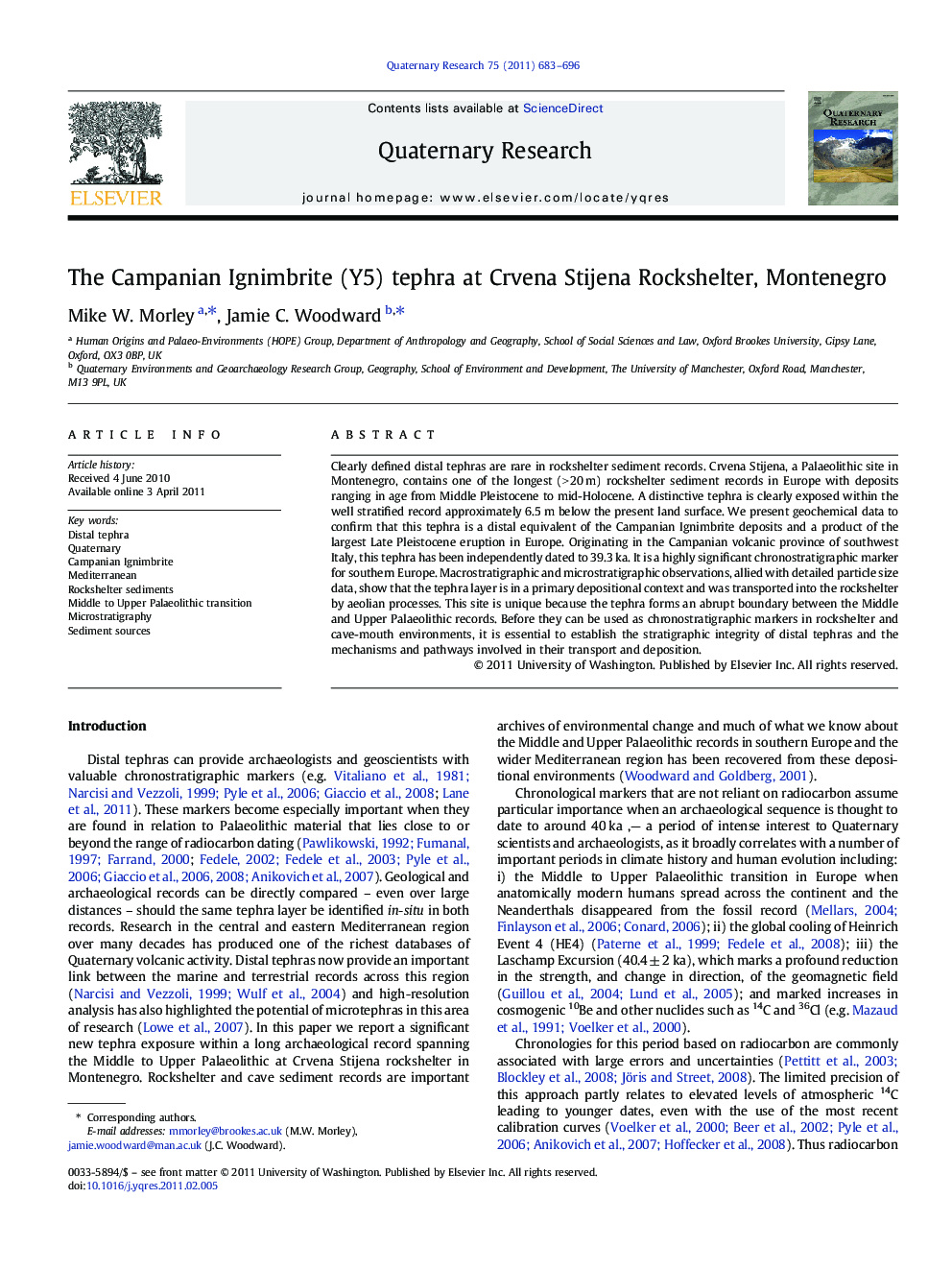| Article ID | Journal | Published Year | Pages | File Type |
|---|---|---|---|---|
| 1045839 | Quaternary Research | 2011 | 14 Pages |
Clearly defined distal tephras are rare in rockshelter sediment records. Crvena Stijena, a Palaeolithic site in Montenegro, contains one of the longest (> 20 m) rockshelter sediment records in Europe with deposits ranging in age from Middle Pleistocene to mid-Holocene. A distinctive tephra is clearly exposed within the well stratified record approximately 6.5 m below the present land surface. We present geochemical data to confirm that this tephra is a distal equivalent of the Campanian Ignimbrite deposits and a product of the largest Late Pleistocene eruption in Europe. Originating in the Campanian volcanic province of southwest Italy, this tephra has been independently dated to 39.3 ka. It is a highly significant chronostratigraphic marker for southern Europe. Macrostratigraphic and microstratigraphic observations, allied with detailed particle size data, show that the tephra layer is in a primary depositional context and was transported into the rockshelter by aeolian processes. This site is unique because the tephra forms an abrupt boundary between the Middle and Upper Palaeolithic records. Before they can be used as chronostratigraphic markers in rockshelter and cave-mouth environments, it is essential to establish the stratigraphic integrity of distal tephras and the mechanisms and pathways involved in their transport and deposition.
